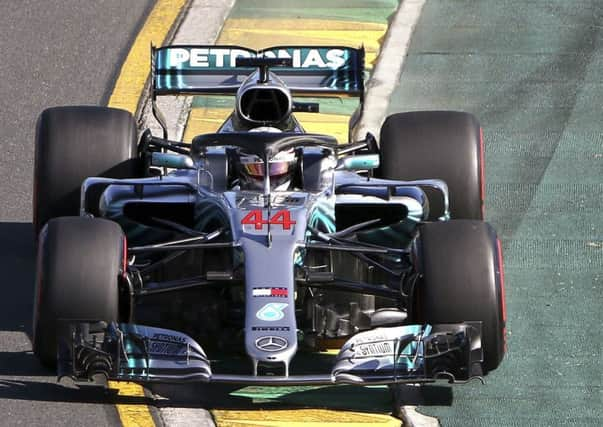Mark Absolon: Why Formula 1 is crying out for a real title battle


After years of Bernie Ecclestone calling the shots, Liberty Media took over the commercial reins of the sport 12 months ago and while they have made some progress in growing the sport and making it more relevant to the modern world, a lot of work still needs to be done behind the scenes.
The dominance of Mercedes, the lack of serious title fights and little, if any, wheel-to-wheel racing resulted in another decline in television viewing figures in 2017 on top of a bigger drop the year before.
Advertisement
Hide AdAdvertisement
Hide AdLiberty will need to entice these lost fans back to the fold and attract a new, young audience – something they have made tentative steps towards by increasing their audience on Social Media platforms such as Twitter, You Tube and Instagram – if they are to turn around the sport’s current malaise.
Evidence that Liberty were moving in the right direction came last season when they addressed one of Formula 1’s biggest issues, namely the lack of engine noise. The cars were sounding fine on track but not on camera.
Their solution was to install ceramic microphones to enhance engine sounds for television which was an important first step to take.
Liberty will also be following very much a ‘fan first’ approach to the sport rather than the ‘team first’ philosophy under Ecclestone, so expect improved experiences at races and far more streaming of race clips and interaction with followers.
Advertisement
Hide AdAdvertisement
Hide AdOn the track, the battle between four-time world champions Lewis Hamilton and Sebastian Vettel will undoubtedly take centre-stage this year.
After a slow start to his 2017 campaign, Hamilton found his feet later in the season and pulled away from Vettel’s stuttering challenge to reclaim the title he relinquished to Nico Rosberg in 2016.
The incentive for both drivers this season is to claim a fifth world title and match the mark set by the legendary Juan Manuel Fangio – though still two behind Michael Schumacher.
Following impressive performances in pre-season testing and the first practice sessions at Albert Park, Red Bull, with Daniel Ricciardo and Max Verstappen, look like they could join Mercedes and Ferrari at the front of the grid in what could be one of the most compelling title battles for years.
Advertisement
Hide AdAdvertisement
Hide AdAs with every Formula 1 season there are always rule changes and innovations and 2018 is no exception.
The biggest change is the introduction of the new halo head protection device.
Brought in to reduce the risk of head injuries, the halo device is essentially a metal ring that floats above the driver’s head – hopefully protecting them from flying debris after an impact.
It may not be popular or particularly pleasing on the eye, but if the new design saves a life or prevents a serious injury, then there will be no complaints.
Advertisement
Hide AdAdvertisement
Hide AdAside from that, teams can now only use three engines during the season as opposed to four last year; shark fins (the large boards placed on the car’s engine covers) are gone for this year while the number of races goes up to 21 from 20.
Another tweak from Liberty Media to help out the TV schedulers will see races start at 10 past the hour, while the European races will move back an additional hour as well.
So, get ready for the British Grand Prix to blast off at 2.10pm this year.
Only time will tell if these innovations will reverse the decline of the sport, but an old-fashioned humdinger of a title battle between Hamilton, Vettel, Verstappen, Ricciardo or even Fernando Alonso would make for compelling viewing – something the sport is crying out for.